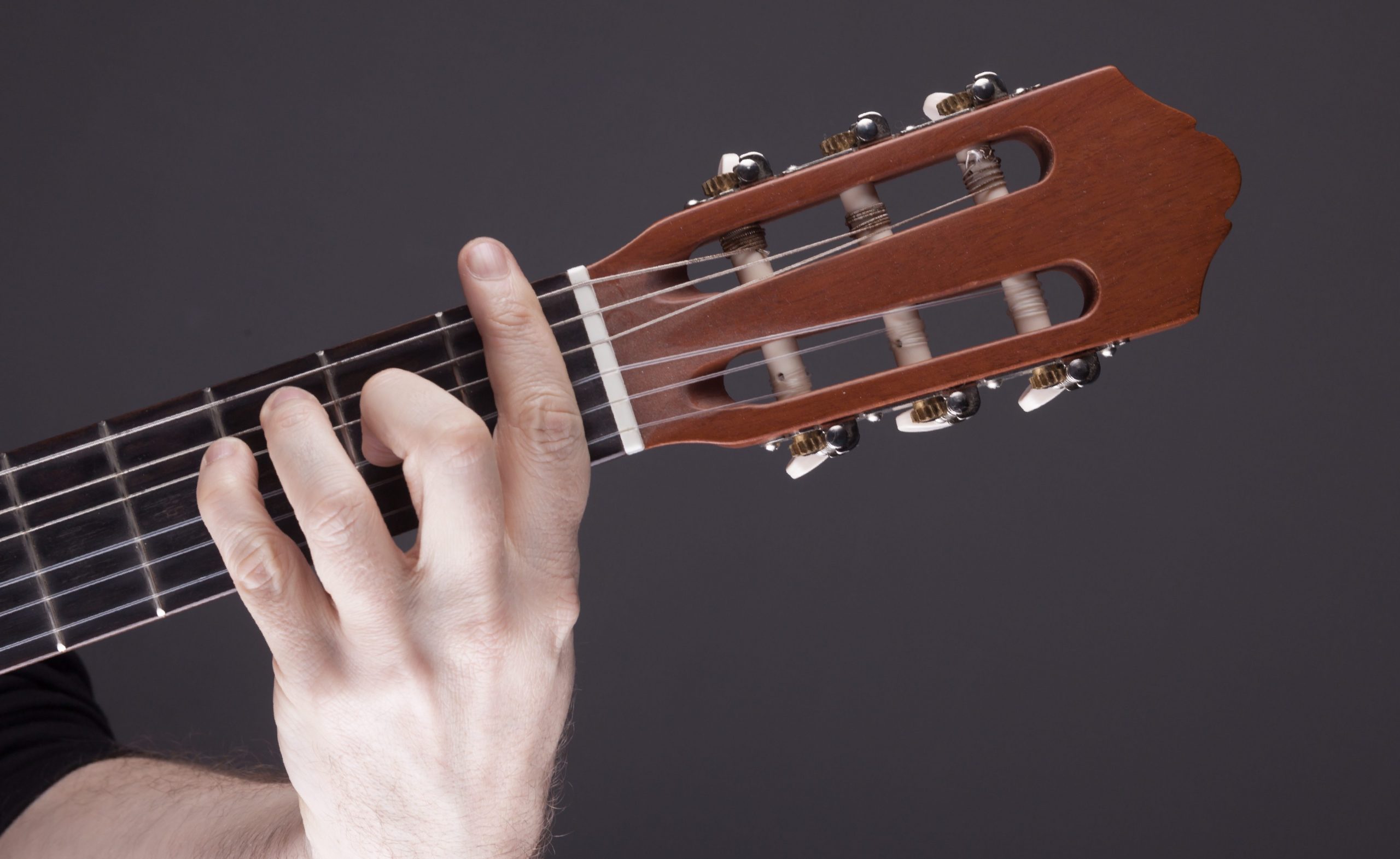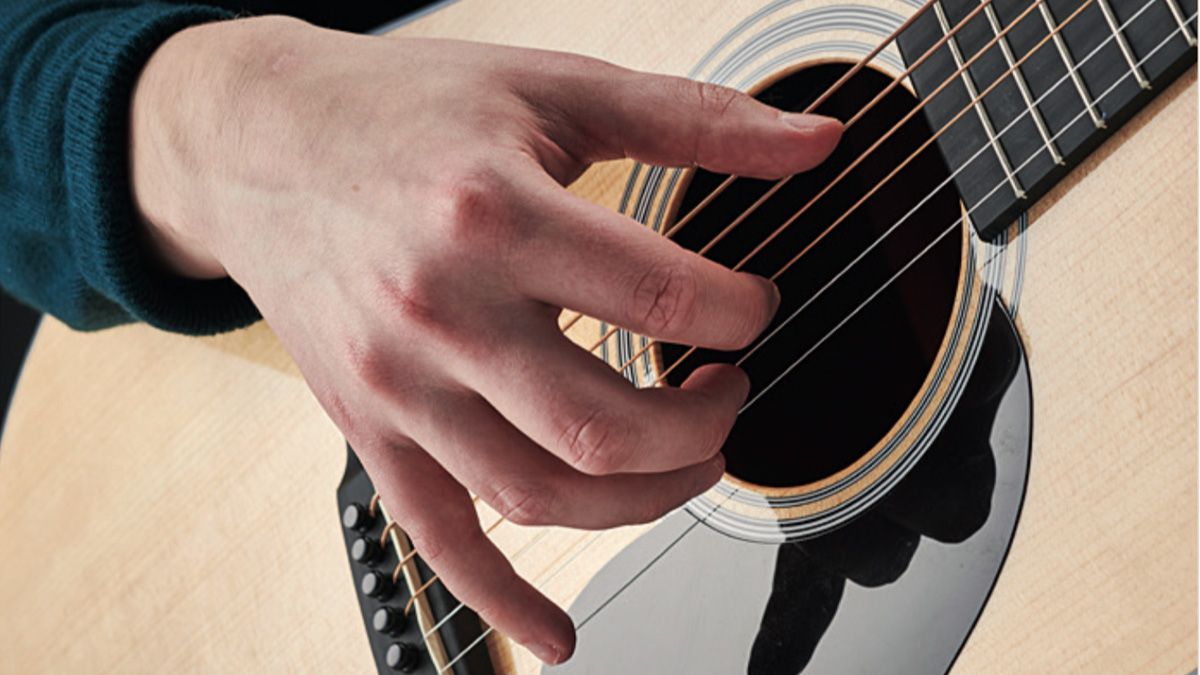Home>Instruments>Guitar>How To Play Country On Guitar


Guitar
How To Play Country On Guitar
Published: February 13, 2024
Learn how to play country on guitar with our step-by-step guide. Master essential techniques and start strumming your favorite tunes today!
(Many of the links in this article redirect to a specific reviewed product. Your purchase of these products through affiliate links helps to generate commission for AudioLover.com, at no extra cost. Learn more)
Table of Contents
Introduction
Playing country music on the guitar is a delightful journey into the heart and soul of a genre that's deeply rooted in American culture. It's a genre that tells stories, evokes emotions, and captures the essence of everyday life. As a guitarist, delving into the world of country music opens up a treasure trove of techniques, styles, and sounds that are both challenging and immensely rewarding to master.
Country music is characterized by its distinctive twangy sound, catchy melodies, and heartfelt lyrics. The guitar plays a pivotal role in shaping the sound of country music, whether it's providing rhythmic accompaniment, delivering soul-stirring solos, or adding intricate embellishments to the music. In this guide, we'll explore the essential techniques, chords, and patterns that form the foundation of playing country music on the guitar.
Whether you're a beginner eager to strum your first country song or an experienced guitarist looking to expand your musical repertoire, this guide will equip you with the knowledge and skills to infuse your playing with the authentic charm of country music. From mastering classic chord progressions to honing your fingerpicking prowess and learning iconic country riffs, this guide will serve as your roadmap to embracing the rich tapestry of country music on the guitar.
So, grab your guitar, tune it to that unmistakable country twang, and get ready to embark on a captivating journey through the heartland of music. Whether you're drawn to the raw honesty of traditional country or the modern edge of contemporary country-rock, the skills and insights you'll gain from this guide will empower you to express the true spirit of country music through your guitar playing. Let's dive in and discover the art of playing country on the guitar!
Getting Started
Before diving into the intricate techniques and nuances of playing country music on the guitar, it’s essential to lay a solid foundation for your musical journey. Whether you’re a novice picking up the guitar for the first time or an experienced player venturing into the realm of country music, the following steps will set the stage for your exploration of this beloved genre.
- Acquaint Yourself with Country Music: Take the time to listen to a diverse range of country songs and artists. Immerse yourself in the sounds of traditional country legends like Johnny Cash, Willie Nelson, and Patsy Cline, as well as contemporary icons such as Keith Urban, Miranda Lambert, and Brad Paisley. Pay attention to the guitar playing styles, chord progressions, and tonal characteristics that define the genre.
- Tune Your Guitar: Country music often employs unique tunings to achieve the twangy, resonant tones that are emblematic of the genre. While standard tuning (EADGBE) is commonly used, exploring alternate tunings such as Open G or Open D can add an authentic country flavor to your playing.
- Master Basic Guitar Techniques: Familiarize yourself with fundamental guitar techniques, including proper fretting, strumming, and picking. Developing a strong foundation in these areas will facilitate your journey into country guitar playing.
- Embrace the Cowboy Chords: Country music frequently relies on open chords, often referred to as “cowboy chords,” due to their prevalence in the genre. Practice chord transitions and strumming patterns for chords like G, C, D, E, and A, as they form the backbone of countless country songs.
- Immerse Yourself in Rhythm: Country music is driven by rhythmic vitality, so familiarize yourself with various strumming patterns and rhythmic feels commonly found in country songs. Developing a keen sense of rhythm will greatly enhance your ability to capture the authentic groove of country music.
By embracing these foundational steps, you’ll pave the way for a fulfilling and enriching journey into the realm of country guitar playing. The next sections will delve deeper into the specific chords, strumming patterns, and techniques that define the captivating sound of country music on the guitar.
Basic Chords
At the core of country guitar playing lie a handful of essential chords that form the harmonic framework for countless beloved songs. These foundational chords, often referred to as “cowboy chords,” are prized for their open, resonant sound and their prevalence in the country music lexicon. Mastering these basic chords is a crucial step toward unlocking the authentic charm of country music on the guitar.
Here are a few fundamental chords that are ubiquitous in the country music landscape:
- G Major (G): This chord exudes a bright, open sound and serves as a cornerstone of country music. It’s often played in its standard form but can also be embellished with added tones to create a richer harmonic texture.
- C Major (C): The C chord’s clear, resonant quality makes it a staple in country songwriting. Its uplifting and vibrant tonality adds a touch of optimism to many country tunes.
- D Major (D): With its robust and triumphant sound, the D chord is a go-to choice for infusing energy and momentum into country rhythms. Its versatility makes it a prevalent feature in both traditional and modern country compositions.
- E Major (E): The E chord’s robust and assertive character lends a sense of determination and drive to country music. Its full-bodied resonance makes it an indispensable component of the country guitarist’s arsenal.
- A Major (A): Renowned for its warm and inviting timbre, the A chord embodies the heartfelt essence of country music. Its comforting and familiar sound forms the backbone of countless country classics.
While these basic chords serve as the cornerstone of country guitar playing, it’s important to explore additional chord variations, such as sevenths, suspensions, and add9 chords, to imbue your playing with depth and color. Moreover, transitioning smoothly between these chords and integrating them into common progressions is essential for capturing the authentic feel of country music.
By mastering these foundational chords and their variations, you’ll lay the groundwork for interpreting and performing a vast repertoire of country songs on the guitar. These chords, with their evocative and resonant qualities, form the harmonic tapestry that defines the timeless allure of country music.
Strumming Patterns
Strumming patterns are the rhythmic heartbeat of country music, infusing songs with energy, drive, and an irresistible groove. Whether you’re accompanying a heartfelt ballad or igniting a lively country rock anthem, mastering diverse strumming patterns is essential for capturing the authentic feel of the genre. Country music encompasses a wide spectrum of rhythmic styles, from laid-back, down-home strumming to spirited, up-tempo rhythms, each contributing to the genre’s rich tapestry of sound.
Here are a few quintessential strumming patterns that are emblematic of country music:
- Down-Down-Up-Up-Down-Up: This versatile pattern is well-suited to mid-tempo country songs, imparting a lively and engaging feel. It provides a balanced blend of downstrokes and upstrokes, creating a dynamic groove that complements the rhythmic cadence of country music.
- Root-5th-Strum: Commonly employed in country rock and uptempo country tunes, this pattern emphasizes the fundamental notes of the chords, often the root and fifth, before delivering a full strum. Its driving, percussive quality propels the music forward, making it an ideal choice for high-energy country tracks.
- Boom-Chicka: This classic country strumming pattern embodies the laid-back, easygoing spirit of traditional country music. It features a distinctive alternating bass note (the “boom”) and chord strum (the “chicka”), evoking the timeless charm of country ballads and folk-infused melodies.
While these patterns serve as foundational templates, country music’s rhythmic landscape is rich with variation and nuance. As you delve deeper into the genre, you’ll encounter intricate syncopated patterns, fingerstyle-inspired rhythms, and hybrid picking techniques that add depth and character to your strumming arsenal.
Mastering these strumming patterns and adapting them to suit different tempos, moods, and song structures will equip you with the rhythmic dexterity to breathe life into any country song on the guitar. Whether you’re channeling the spirited exuberance of country rock, the heartfelt introspection of ballads, or the timeless allure of traditional country, the art of crafting compelling strumming patterns is an indispensable skill in your journey as a country guitarist.
Fingerpicking Techniques
Fingerpicking is a hallmark of the evocative, soul-stirring sound that defines many iconic country songs. This intricate and expressive technique allows guitarists to weave rich tapestries of melody, harmony, and rhythm, evoking the heartfelt nuances of the genre. Whether you’re aiming to evoke the rustic charm of folk-tinged ballads or the intricate embellishments of country blues, mastering fingerpicking techniques is essential for capturing the authentic essence of country music on the guitar.
Here are a few fundamental fingerpicking patterns that are emblematic of country music:
- Travis Picking: Named after the legendary country guitarist Merle Travis, this alternating bass pattern forms the backbone of countless country and folk songs. It involves picking individual bass notes with the thumb while simultaneously plucking the higher strings with the fingers, creating a captivating interplay of melody and rhythm.
- Carter Style: Originating from the pioneering efforts of Maybelle Carter, this influential technique combines thumb independence and melodic embellishments to produce a lush, harmonically rich sound. It’s a staple of traditional country and bluegrass music, renowned for its captivating blend of rhythm and melody.
- Fingerstyle Arpeggios: Embraced in both acoustic and electric country guitar playing, arpeggiated fingerstyle patterns add a touch of elegance and finesse to country ballads and introspective compositions. By delicately plucking individual notes within chords, guitarists can evoke a sense of intimacy and emotional depth in their playing.
As you delve into the realm of fingerpicking, you’ll encounter a myriad of intricate patterns, hybrid picking variations, and melodic embellishments that enrich the sonic tapestry of country music. Whether you’re evoking the timeless nostalgia of classic country standards or infusing contemporary country compositions with a touch of acoustic elegance, the art of fingerpicking opens up a world of expressive possibilities on the guitar.
Mastering these fingerpicking techniques will empower you to infuse your country guitar playing with a captivating blend of melody, rhythm, and harmonic richness. From introspective ballads to lively folk-inspired tunes, the art of fingerpicking is a cornerstone of the evocative and soulful sound that defines country music’s enduring appeal.
Common Country Guitar Techniques
Country music’s diverse sonic landscape is adorned with a myriad of guitar techniques that contribute to its distinctive charm and emotive power. From soul-stirring bends and vibrant double stops to the spirited twang of chicken pickin’, mastering these techniques is essential for capturing the authentic essence of country music on the guitar. Let’s explore a few quintessential techniques that define the captivating sound of country guitar playing:
- Bends and Slides: Country guitarists often employ expressive bends and slides to infuse their playing with poignant, emotive flourishes. Whether it’s a subtle half-step bend adding a touch of yearning to a melody or a soaring whole-step bend evoking the cry of a pedal steel, these techniques are integral to conveying the heartfelt nuances of country music.
- Double Stops: The art of playing two notes simultaneously, known as double stops, is a hallmark of country guitar playing. Whether it’s the joyous twang of major double stops or the bittersweet resonance of minor double stops, integrating these harmonies adds depth and character to country melodies and solos.
- Chicken Pickin’: This spirited and percussive technique involves plucking the strings with a combination of pick and fingers, creating a distinctive “clucking” sound reminiscent of a chicken’s pecking. Widely associated with the lively twang of country and rockabilly music, mastering chicken pickin’ adds a playful and dynamic edge to country guitar solos and rhythm playing.
- Hybrid Picking: Embraced for its versatility and dexterity, hybrid picking combines flatpicking with fingerpicking, allowing guitarists to execute complex melodic lines, arpeggios, and rapid-fire licks with precision and fluidity. This technique enriches country guitar playing with a seamless blend of pick attack and fingerstyle finesse.
By honing these techniques and integrating them into your playing, you’ll imbue your country guitar performances with the evocative nuances and vibrant textures that define the genre’s timeless allure. Whether you’re crafting soulful, introspective ballads or igniting spirited country rock anthems, these techniques serve as indispensable tools for expressing the heartfelt essence of country music through the guitar.
Playing Country Riffs and Solos
Country music is renowned for its captivating riffs and soulful solos, which serve as emotive focal points within songs, adding depth, character, and melodic intrigue. Whether you’re channeling the timeless elegance of classic country or infusing your playing with the dynamic energy of contemporary country-rock, mastering country riffs and solos is a gateway to expressing the genre’s heartfelt essence through the guitar.
Here are a few key elements that define compelling country riffs and solos:
- Melodic Phrasing: Country riffs and solos often feature melodic phrasing that mirrors the expressive qualities of a human voice. Embracing bends, slides, and tasteful vibrato adds a vocal-like quality to your playing, infusing your riffs and solos with emotive depth and captivating resonance.
- Open String Licks: Leveraging the twangy resonance of open strings is a hallmark of country guitar playing. Incorporating open string licks and double stops infuses your riffs and solos with the genre’s distinctive twang, evoking the rustic charm and vibrant tonality that define country music.
- Dynamic Hybrid Picking: Country riffs and solos often showcase the dynamic versatility of hybrid picking, allowing guitarists to seamlessly blend pick attack with fingerstyle finesse. This technique enables the execution of rapid-fire licks, intricate arpeggios, and cascading melodic runs that define the spirited allure of country guitar playing.
Whether you’re crafting evocative ballad riffs that tug at the heartstrings or unleashing fiery solos that ignite the fretboard, the art of playing country riffs and solos is a testament to the genre’s emotive power and melodic richness. By infusing your playing with expressive phrasing, twangy embellishments, and dynamic picking techniques, you’ll unlock a world of melodic storytelling and emotive resonance on the guitar.
Mastering country riffs and solos empowers you to weave compelling musical narratives, evoking the timeless allure and heartfelt spirit of country music through the evocative language of the guitar. Whether you’re paying homage to the legends of traditional country or forging new sonic frontiers in contemporary country-rock, the art of crafting captivating riffs and solos is a cornerstone of the country guitarist’s expressive journey.
Conclusion
Embarking on the journey of playing country music on the guitar is a vibrant and enriching experience that invites you to delve into the heart and soul of a genre steeped in tradition, emotion, and captivating musicality. From mastering foundational chords and rhythmic patterns to embracing the expressive techniques and melodic storytelling that define country guitar playing, this guide has provided a roadmap for infusing your musical journey with the authentic charm of country music.
As you immerse yourself in the twangy resonance of country chords, the spirited vitality of rhythmic patterns, and the evocative allure of fingerpicking techniques, you’re not only honing your skills as a guitarist but also embracing the timeless art of musical storytelling. Whether you’re drawn to the raw honesty of traditional country ballads, the dynamic energy of country rock, or the heartfelt introspection of folk-infused melodies, the rich tapestry of country music offers a boundless canvas for artistic expression on the guitar.
By mastering the essential techniques and embracing the emotive nuances that define country guitar playing, you’re poised to channel the heartfelt essence of the genre through your music. Whether you’re crafting soul-stirring ballads, igniting lively country anthems, or weaving melodic tales through evocative riffs and solos, your journey as a country guitarist is a testament to the enduring allure and emotive power of this beloved genre.
So, let your guitar become a storyteller, weaving narratives of love, loss, resilience, and the vibrant tapestry of life. Embrace the twang, the resonance, and the soulful timbres that define country music, and allow your playing to echo the timeless traditions and contemporary innovations that shape the genre. As you continue your musical odyssey through the heartland of country music on the guitar, may your melodies resonate with authenticity, your rhythms pulse with vitality, and your playing embody the enduring spirit of country music.











